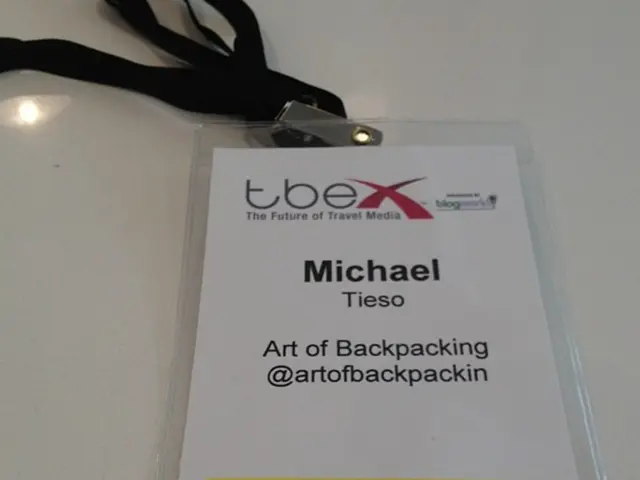Managing Political Imagery: Intelligent Leaders Crafting Public Opinion and Directing Discourse
In the age of social media and digital communication, political image management has become a crucial aspect of political campaigns. Understanding how to effectively and ethically shape public perception is essential in shaping public opinion, as political communication can be a powerful tool.
Political Image Management refers to the strategies politicians use to control their images, including crafting sound bites, managing media coverage, and taking care of appearances. This field is particularly important in the digital age, where social media magnifies a politician's presence, enabling direct connections with voters and increasing vulnerability to backlash.
Effective political image management requires a balance of strategic communication, ethical responsibility, and adaptability to a fragmented, fast-moving media environment. Transparency, respect for data ethics, avoidance of manipulation, and responsiveness to real-time events are key pillars in maintaining an authentic political reputation in the digital age.
Truthfulness and avoiding manipulation are paramount. Politicians must avoid using social media data or platforms to manipulate public opinion deceptively, such as spreading misinformation, doctored images, or partisan distortions. Respecting privacy and data ethics is also essential, with collecting and using social media data done ethically without invading user privacy or manipulating behavioral data unethically to influence political outcomes.
Responsiveness and real-time accountability are also crucial. Given the "real-time journalism" nature of modern media, political image managers must respond swiftly and responsibly to developments, factual framing, and narrative adaptation need to be done promptly to preserve credibility in a climate of rapid news cycles and viral content.
Avoiding emotional exploitation is another ethical consideration. While emotionally charged content drives engagement and virality, it raises ethical questions about deliberately exploiting emotions to polarize or inflame hostility among the public. Transparency and fairness are also important, with political image strategies needing to be transparent about their intentions and methods, avoiding covert influence tactics that undermine democratic discourse.
Best practices for ethical political image management on digital platforms include maintaining accurate and honest messaging, monitoring and managing reputation responsibly, adapting to fragmented digital publics, complying with legal and regulatory standards, engaging in two-way communication, and evaluating impact through research and experimentation.
Inconsistency, over-polishing, ignoring cultural context, or failure to adapt during crises can damage credibility and voter trust. An image consultant can help refine public perception through wardrobe choices, speech coaching, body language, and media training.
Political Image-Building Strategies include becoming a public figure, developing a political identity, using social media to showcase personality, cultivating relationships with journalists, bloggers, and other influencers in politics, creating a campaign slogan, engaging in social media outreach, keeping an updated website, being authentic, engaging in social media activities, showing work ethic, being consistent with what you say and do, keeping a low profile when it comes to controversial topics, and creating a strong personal brand.
The rise of social media has made political image management more critical, as politicians must keep their image positive to avoid negative public opinion. Media appearances amplify a politician's message and image, while policy drives governance, the image often drives electability.
Political Communication Strategies include developing a campaign slogan, using ads to reach voters who are undecided or don't know much about a candidate, focusing on the benefits of voting for a candidate rather than attacking opponents, visiting college campuses and speaking with students, establishing a clear message, using persuasive language, creating an emotional connection with the audience, using social media to reach voters, understanding the views of the audience and tailoring messages accordingly, holding rallies, speeches, or events as a way to build momentum for a campaign, understanding the political culture and values of the audience, identifying and defining one's stance on an issue, selecting a communication strategy that is appropriate for the situation or environment, planning how to communicate with the audience using this strategy to achieve goals, understanding the goal of the communication, determining the audience's needs and interests, choosing a medium that best suits the message and target audience, developing a message to convey, including key points and supporting evidence, preparing for rebuttals from opponents, understanding the political and cultural contexts in which communication is taking place, tailoring messages to specific audiences, using persuasive language and imagery to make a point, avoiding using words that are too technical or complicated for the average person to understand, using humor when appropriate, being careful not to offend anyone with an inappropriate joke, creating a strong personal brand, connecting with the audience on social media, being mindful of the audience and their beliefs, making sure the message is concise and easy for voters to understand, understanding that people will disagree with you, trying to find common ground, having a set of talking points that can be used in any situation, including specific examples and statistics when speaking about policies, avoiding using jargon or buzzwords that are too complicated for the average person to understand, explaining them with more simple language, using humor as an ice breaker during speeches, and being mindful of the audience and their beliefs.
In conclusion, ethical and effective political image management in the digital age requires a thoughtful and strategic approach. By adhering to best practices and ethical considerations, politicians can build and maintain a positive image, engage with their constituents effectively, and ultimately, shape public opinion in a democratic and responsible manner.
- In the digital age, crafting a positive image on social media is vital for politicians to avoid negative public opinion.
- Best practices for ethical political image management involve maintaining accuracy, responsiveness, and transparency in messaging and actions.
- Respecting privacy and the ethical use of social media data is crucial to avoid manipulating public opinion deceptively.
- Adapting to a fragmented digital public and adopting effective political communication strategies are key to shaping public opinion.
- Political image management should aim to promote ethical values, avoid emotional exploitation, and maintain credibility with voters.
- Avoiding inconsistency, over-polishing, ignoring cultural context, and failure to adapt during crises are common pitfalls in political image management.
- A strong personal brand, authentic representation, and engaging with constituents through social media can help politicians develop a positive image.
- Ethical political image management in the digital age requires a strategic approach that balances the power of social media with respect for privacy, data ethics, and democratic discourse.




